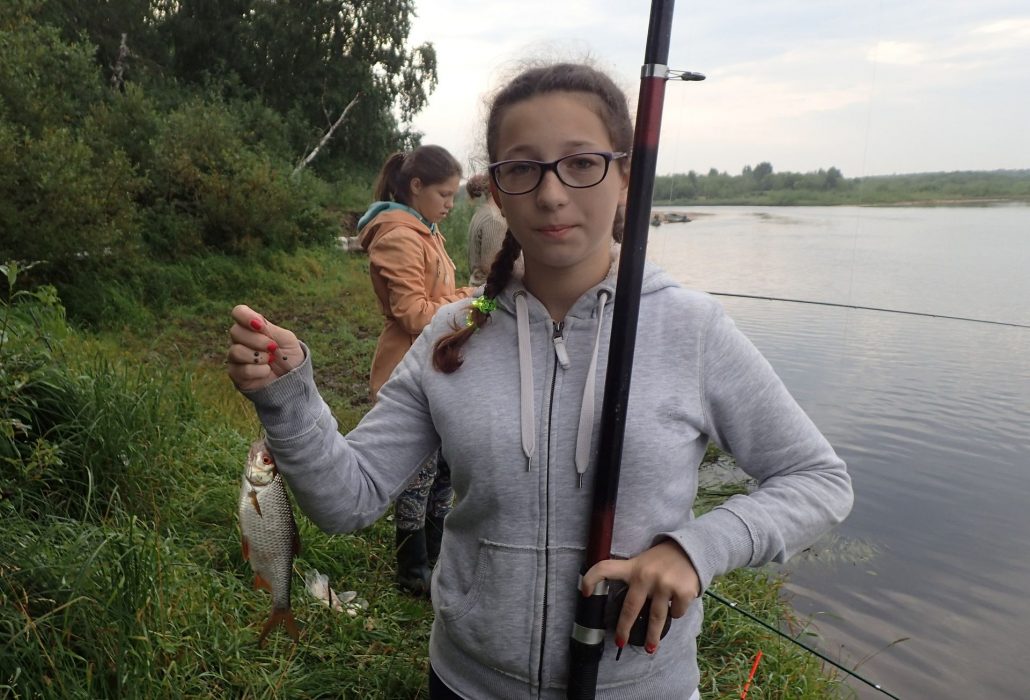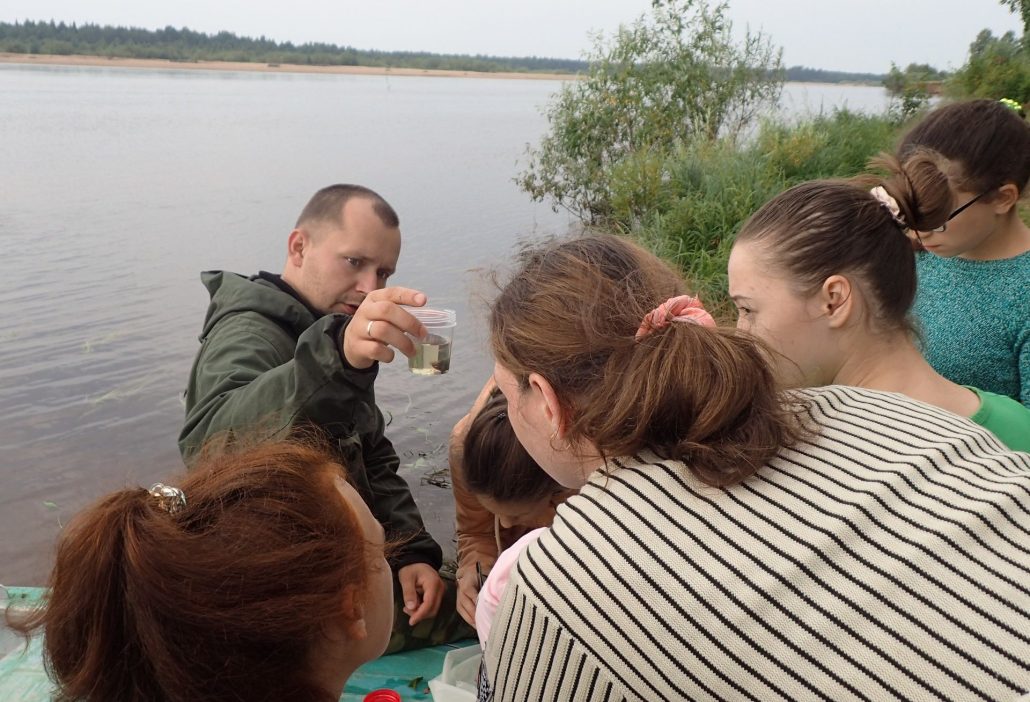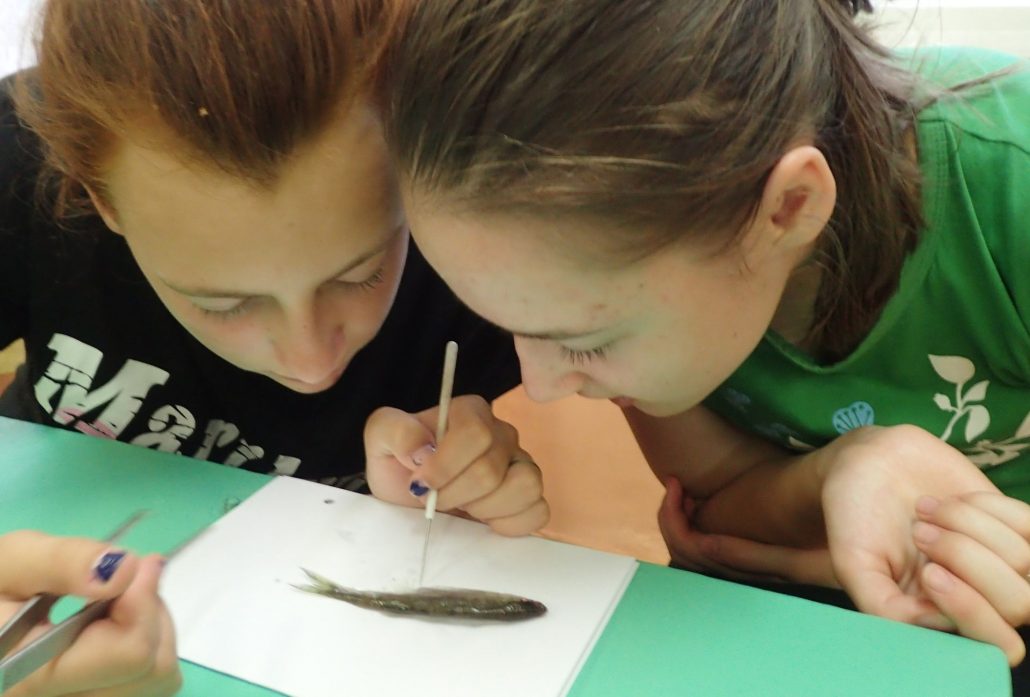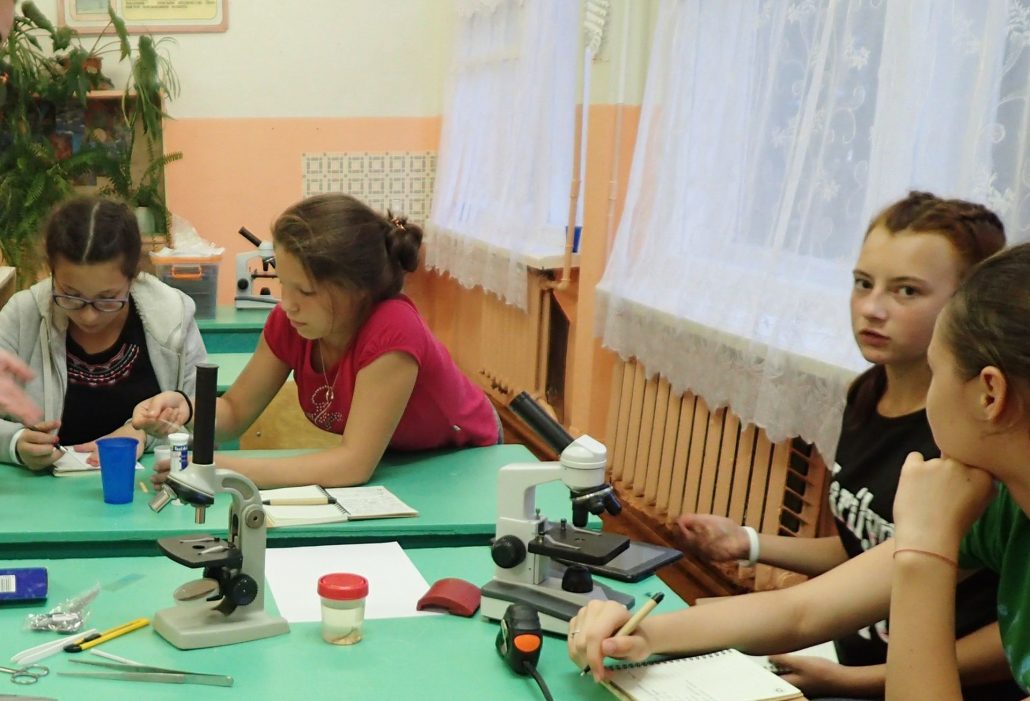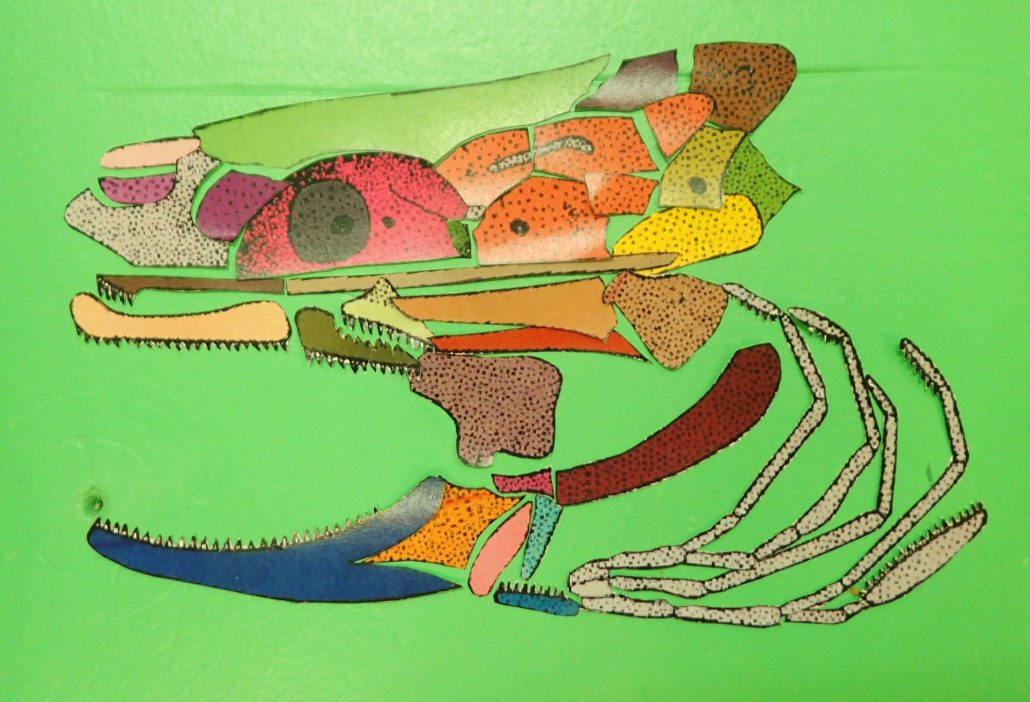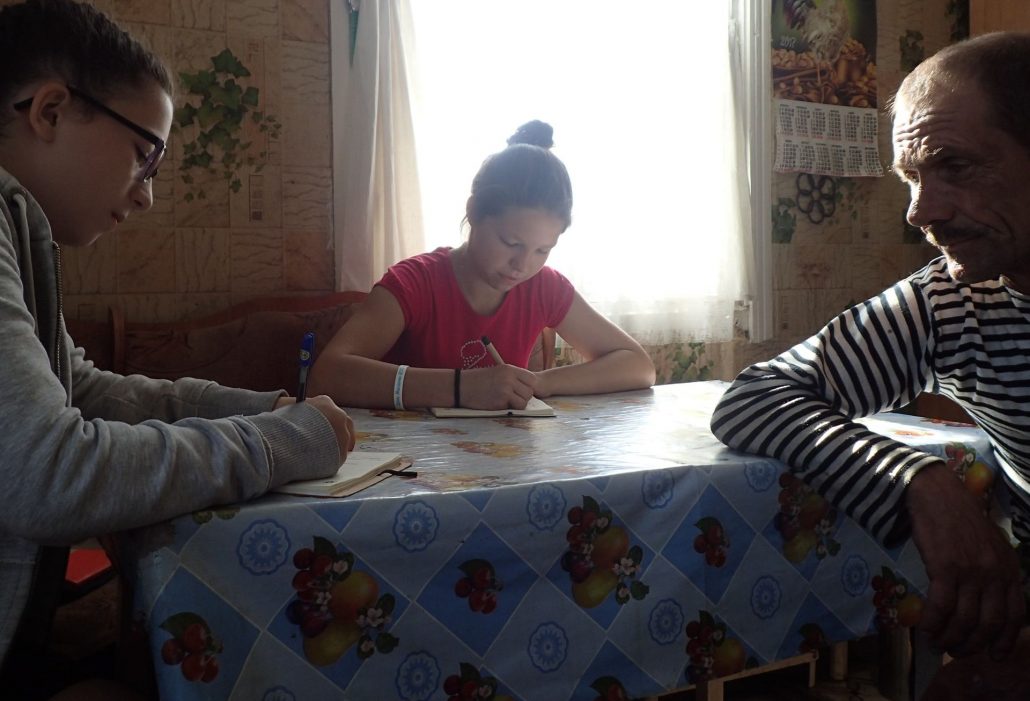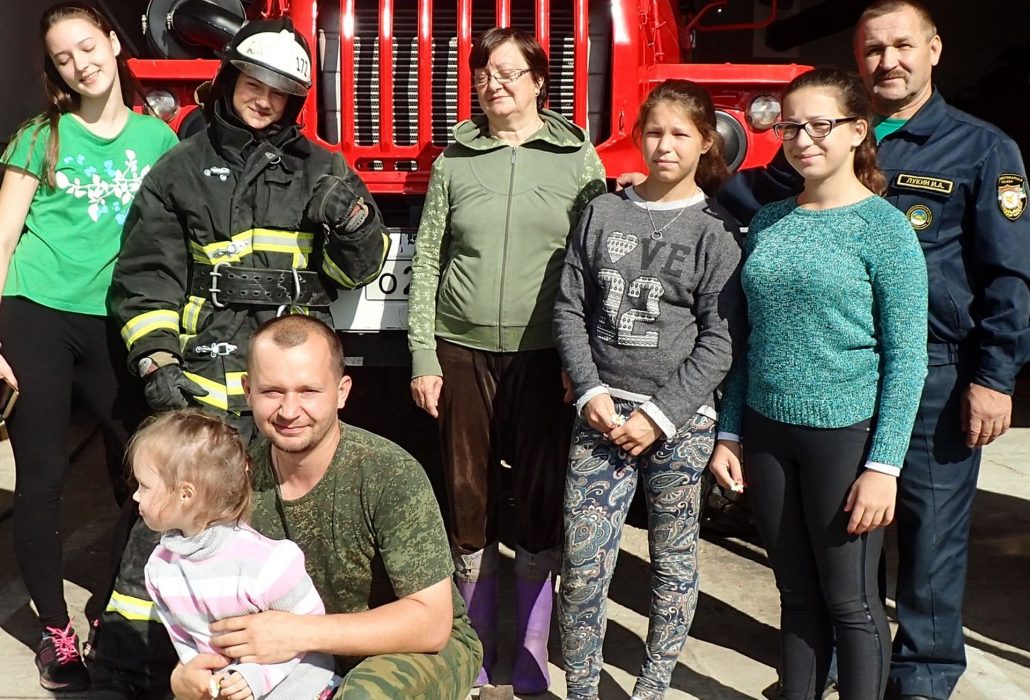Studied Fish Scales Microscopically and Made a Fire with a Stone
From 21 to 25 August, the Summer Ichthyologic School was held in Vazhgort, Udora district, as part of the Model River Mezen project, jointly with the Usogorsk Children Recreational Center, Komi Republic Center of SPNA, with the support of the Vazhgort Secondary School. The participants were kids from different places – Syktyvkar, Usogorsk and Vazhgort. In total, there were 18 participants, four adults and 14 schoolchildren aged from 13 to 16.
“The Summer Ichthyologic School has operated for three years already, and for all this time we have found the method to make both newcomers and permanent students interested. The schoolchildren obtain basic skills of biological material handling. Many of the kids make reports based on the knowledge they get and present them at various forums, for example at the Motherland – Komi Land conference, but the purpose is not to write a research work,’ Nikolay Shilov, initiator and director of the Ichthyologic School, coordinator of the Model River Mezen project, says.
N. Shilov is giving a lecture
At the training session he told the children about the Mezen ichthyofauna, the fish anatomy, methods of fish stock keeping, human role in preserving bioresources, and conducted practical lessons.
Practical training
Training was held in the Vazhgort Secondary School, and there was a good reason to choose the venue. In the first year the research was conducted at the Irva river in the area of the upper reaches of the Mezen, in the second year the school was arranged in the village Bolshaya Pyssa near the middle reaches of the river, and now the focus was on the Mezen tributary – the Vashka – and the Kula river flowing into it.
The program was targeted on teaching the schoolchildren how to determine the composition of the fish population in the Vashka basin with available methods. So, the kids accompanied by adults went fishing, caught fish and prosected it. By analyzing the scale under the microscope they estimated the age of fish, looked for parasites and defined them.
The underwater world under the microscope is even more interesting
This year, the school used new entertaining teaching methods. For example, the schoolchildren studied the anatomy of fish with the help of puzzles, watched a video on artificial fish reproduction and the state of industrial fishing in the Komi Republic.
Fish skeleton puzzle
Also, during the session the schoolchildren conducted a survey among local fishermen to get to know the details of the species composition of the fish, asked about the causes of increase or reduction of the population, were interested about the tools used to catch fish and assessed the overall state of the fishery resources. The survey revealed a lot of new information for the students, some of the answers puzzled them. For example, the locals told them that they had started seeing bull-trout in the Vashka, but the description given identified that they mix the bull-trout up with other salmon species. The children specially noted that the fishermen believed it was necessary to restrict catchment during the spawning period to preserve the fish population.
Interviewing the fisherman
Guided by Margarita Shilova, senior expert of environmental education department, Center of SPNA, the children conducted assessment of the quality of surface water in the Vashka and the Kula and tried to make a filter for water in the field conditions. With the help of test-strips and the portable Bee-Bio lab they learned how to determine chemical properties of water. Most results enabled them to draw a conclusion that the water quality was good even with dark colouring. The expert also had an informative lecture about the Red Book of the Komi Republic upon completion of which the children were able to find the conserved species of plants, animals, insects inhabiting the Udora district.
The kids also performed as experts in an environmental game and managed successfully to find solutions for ecological problems.
A representative of the Center of SPNA conducted a workshop for teachers under the extended training course Reserved School, and some game lessons for the children.
What the students were most impressed by were the tours facilitated by Irina Klishch, director of the Vazhgort Secondary School. During such trips she informed the kids about the diversity of species of plant communities near Vazhgort. Additionally, the kids learned how to survive in the forest, they were taught to make fire with a stone, to find their way in the forest with the help of compartment lines and water bodies. The schoolchildren also visited the local fire brigade where they were told about how to behave in emergency situations. And on the last day the young ichthyologists went to the Vazhgort museum. The kids also played sports – volleyball and other active games. The leisure activities were organized by Nadezhda Morozova from the Usogorsk Children Recreational Center.
“It is great that at the end of the session all children had a huge desire to join the summer ichthyologic school next year. They offered to make a list of additional topics jointly with instructors. For example, they recommended to include the detailed study of a skeleton of bony fish,” Nikolay Shilov summed up the results of the Summer Ichthyologic School.
Visiting the fire station
Photos by Nikolay Shilov

